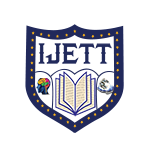Forecasting Teaching Materials Using the Autoregressive Integrated Moving Average (ARIMA) Method Case Study: Universitas Terbuka
Forecasting Teaching Materials Using the Autoregressive Integrated Moving Average (ARIMA) Method Case Study: Universitas Terbuka |
||
 |
 |
|
| © 2025 by IJETT Journal | ||
| Volume-73 Issue-6 |
||
| Year of Publication : 2025 | ||
| Author : Bagus Arif Wicaksono, Tuga Mauritsius | ||
| DOI : 10.14445/22315381/IJETT-V73I6P139 | ||
How to Cite?
Bagus Arif Wicaksono, Tuga Mauritsius, "Forecasting Teaching Materials Using the Autoregressive Integrated Moving Average (ARIMA) Method Case Study: Universitas Terbuka," International Journal of Engineering Trends and Technology, vol. 73, no. 6, pp.476-484, 2025. Crossref, https://doi.org/10.14445/22315381/IJETT-V73I6P139
Abstract
Universitas Terbuka (UT) is an open and distance learning university in Indonesia, where teaching materials serve as the primary learning resources. Currently, UT relies on manual calculations using Microsoft Excel to estimate the required number of printed materials. This approach often results in inaccurate forecasts, leading to either a surplus or shortage of teaching materials. Such discrepancies negatively impact operational efficiency and cost-effectiveness. Repeated duplication increases unit costs, while surplus materials risk expiration and waste due to content updates or limited shelf life. This study applies a machine learning approach, specifically the ARIMA method, within the CRISP-DM framework to accurately forecast teaching material needs. Results show that the ARIMA (2,1,0) model, with parameters p=2, d=1, q=0, and AIC=34.512 and BIC=30.591, provides the best performance. Teaching material EKMA4434, used in 11 study programs, recorded the lowest RMSE of 5,909.881 units, indicating an average prediction error of that magnitude against actual usage.
Keywords
Forecasting, Machine Learning, Time series, Teaching material, Arima.
References
[1] George E. P. Box et al., Time Series Analysis forecasting and Control, Revised Edition, Holden Day, San Francisco, 1976.
[Google Scholar]
[2] P. Sathish kumar et al., “Rainfall Forecasting using Machine Learning Techniques,” Journal of Xidian University, vol. 14, no. 6, pp. 2177-2189, 2020.
[CrossRef] [Publisher Link]
[3] Sri Baginda Dalimunthe, Rosnani Ginting, and Sukaria Sinulingga, “The Implementation of Machine Learning in Demand Forecasting: A Review of Methods Used in Demand Forecasting with Machine Learning,” Journal of Industrial Engineering Systems, vol. 25, no. 1, pp. 41-49, 2023.
[CrossRef] [Google Scholar] [Publisher Link]
[4] Deepali M. Kotambkar, and Pallavi M. Wankhede, “Hybrid LSTM/GRU-based Domain Adaptation Model for Correlation Analysis to Detect Glaucoma,” SSRG International Journal of Electrical and Electronics Engineering, vol. 10, no. 1, pp. 168-175, 2023
[CrossRef] [Publisher Link]
[5] Adeline P. Dela Cruz et al., “Higher Education Institution (HEI) Enrollment Forecasting Using Data Mining Technique,” International Journal of Advanced Trends in Computer Science and Engineering, vol. 9, no. 2, pp. 2060-2064, 2020.
[CrossRef] [Google Scholar] [Publisher Link]
[6] Alexiei Dingli, and Karl Sant Fournier, “Financial Time Series Forecasting - A Machine Learning Approach,” Machine Learning and Applications: An International Journal, vol. 4, no. 1/2/3, pp. 11-27, 2017.
[CrossRef] [Google Scholar] [Publisher Link]
[7] Josef Eiglsperger, Florian Haselbeck, and Dominik G. Grimm, “ForeTiS: A Comprehensive Time Series Forecasting Framework in Python,” Machine Learning with Applications, vol. 12, 2023.
[CrossRef] [Google Scholar] [Publisher Link]
[8] Hasbi Hassyddiqy, and Hasdiana, “Sales Forecasting Analysis Using ARIMA (Autoregressive Integrated Moving Average) Method at Huebee Indonesia,” Data Sciences Indonesia, vol. 2, no. 2, pp. 92-100, 2022.
[CrossRef] [Google Scholar] [Publisher Link]
[9] G.O. Kyung, and I.F. Myung-Suck, “Evaluation of Short-Term Interval Models for Financial Time Series Forecasting,” SSRG International Journal of Industrial Engineering, vol. 2, no. 3, pp. 5-8, 2015.
[CrossRef] [Publisher Link]
[10] James J. Lee, and Misuk Lee, “Intelligent Structuration: Machine Learning Forecasting,” Issues in Information Systems, vol. 23, no. 1, pp. 239-246, 2022.
[CrossRef] [Google Scholar] [Publisher Link]
[11] Xing Yee Leong et al., “Forecasting Elective Surgery Demand using ARIMA-Machine Learning Hybrid Model,” European Journal of Artificial Intelligence and Machine Learning, vol. 2, no. 3, pp. 1-7, 2023.
[CrossRef] [Google Scholar] [Publisher Link]
[12] Li Deng, and Dong Yu, “Deep Learning: Methods and Applications,” Foundations and Trends® in Signal Processing, vol. 7, no. 3-4, pp.197-387, 2014.
[CrossRef] [Google Scholar] [Publisher Link]
[13] Spyros Makridakis, Evangelos Spiliotis, and Vassilios Assimakopoulos, “Statistical and Machine Learning Forecasting Methods: Concerns and Ways Forward,” PLOS ONE, vol. 13, no. 3, 2018.
[CrossRef] [Google Scholar] [Publisher Link]
[14] Bohdan M. Pavlyshenko, “Machine-Learning Models for Sales Time Series Forecasting,” Data, vol. 4, no. 1, pp. 1-11, 2019.
[CrossRef] [Google Scholar] [Publisher Link]
[15] Gregory Piatetsky, “CRISP- DM, Still the Top Methodology for Analytics, Data Mining, or Data Science Projects,” KDnuggets, 2014.
[Google Scholar] [Publisher Link]
[16] Christoph Schröer, Felix Kruse, and Jorge Marx Gómez, “A Systematic Literature Review on Applying CRISP-DM Process Models,” Procedia Computer Science, vol. 181, pp. 526-534, 2021.
[CrossRef] [Google Scholar] [Publisher Link]
[17] Ashish Sedai et al., “Performance Analysis of Statistical, Machine Learning and Deep Learning Models in Long-Term Forecasting of Solar Power Production,” Forecasting, vol. 5, no. 1, pp. 256-284, 2023.
[CrossRef] [Google Scholar] [Publisher Link]
[18] Asha Sunki et al., “Time Series Forecasting of Stock Market Using ARIMA, LSTM and FB Prophet,” MATEC Web of Conferences, International Conference on Multidisciplinary Research and Sustainable Development (ICMED 2024), vol. 392, pp. 1-21, 2024.
[CrossRef] [Google Scholar] [Publisher Link]
[19] Atwi Suparman, and Amin Zuhairi, “Distance Education for Sustainable Development: Lessons Learned from Indonesia,” UT-SEAMOLEC International Seminar “Open and Distance Learning for Sustainable Development, Jakarta, 2004.
[Google Scholar]
[20] Richard J. Tersine, Principles of Inventory and Materials Management, 3rd ed., Prentice-Hall International, New Jersey, USA, 1994.
[Google Scholar] [Publisher Link]
[21] Dominik Wolff, and Fabian Echterling, “Stock Picking with Machine Learning,” Journal of Forecasting, vol. 43, no. 1, pp. 81-102, 2024.
[CrossRef] [Google Scholar] [Publisher Link]
[22] G. Peter Zhang, “Time Series Forecasting Using a Hybrid ARIMA and Neural Network Model,” Neurocomputing, vol. 50, pp. 159-175, 2003.
[CrossRef] [Google Scholar] [Publisher Link]

